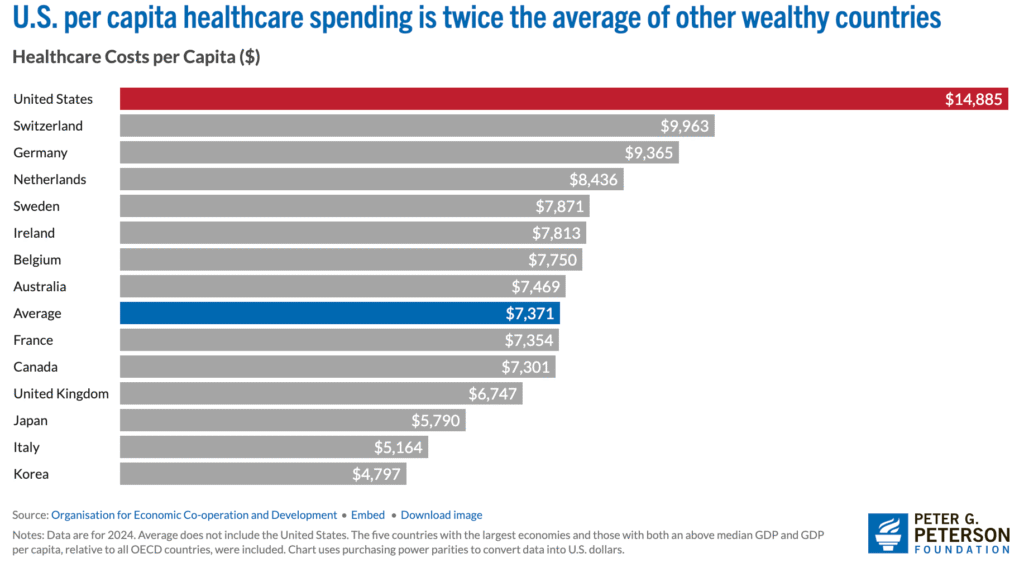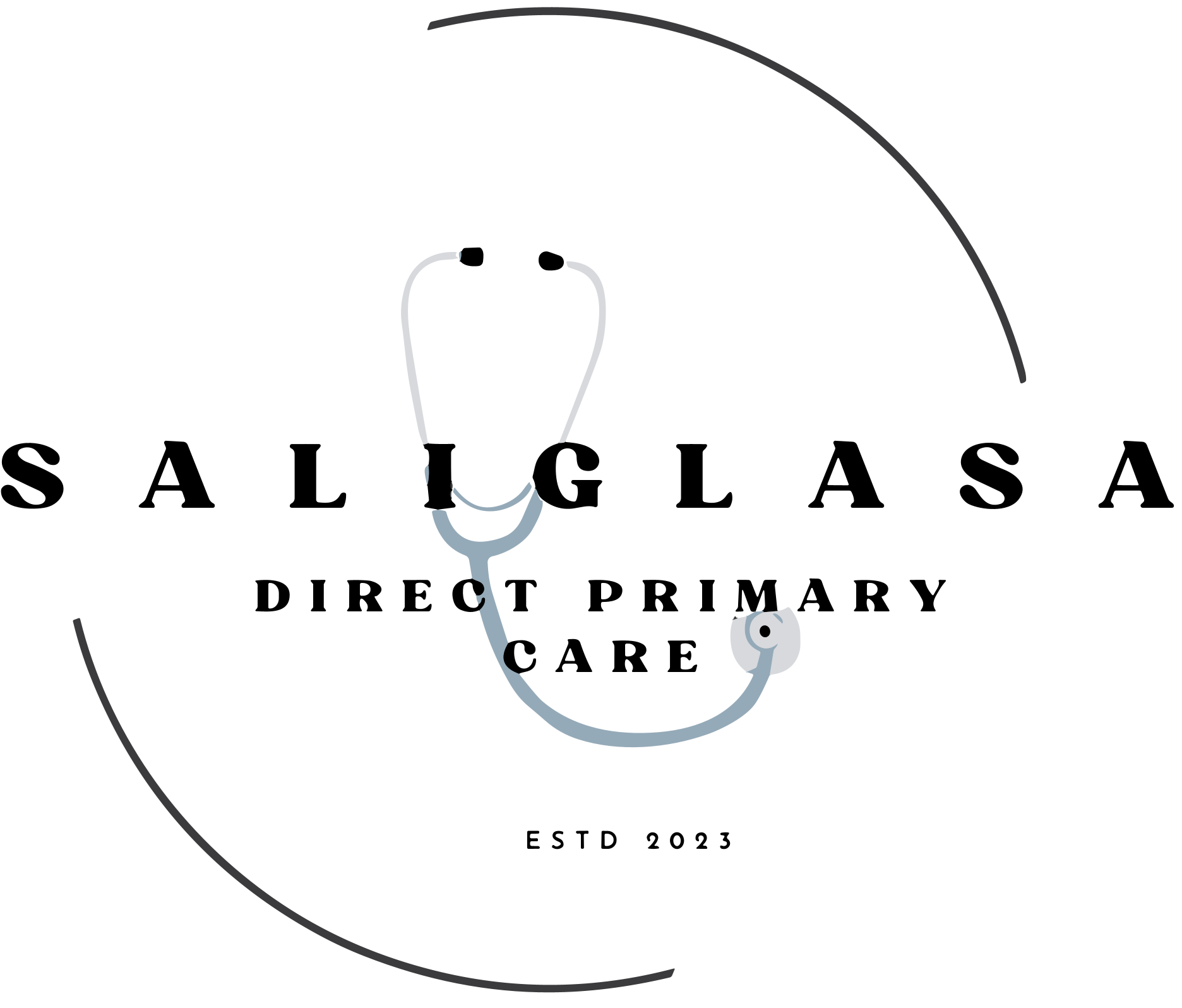In April 2021, the Connecticut Mirror, an independent digital journal, published an op-ed I wrote about our healthcare system titled “A Healthcare System Too Broken to Fix.” I wrote that piece while serving as the Chief Medical Officer for a clinic in Hartford, Connecticut, during the height of the COVID-19 pandemic. One of the central points I pointed out was the well known fact that our healthcare system has never been a good steward of the dollars entrusted to it—a reality reflected in our disproportionately high healthcare spending as a share of GDP compared to the poorer health outcomes we experience relative to other industrialized nations.
https://ctmirror.org/2021/04/15/a-healthcare-system-too-broken-to-fix/
When I wrote that op-ed in 2021, I included a graph from the Peterson Foundation showing that U.S. healthcare expenditures made up 17% of our GDP, even though our health outcomes lagged behind those of other developed countries. Today, according to the Peterson Foundation, that figure has risen to 18%. Another way to view this spending is through per capita expenditure—the amount spent per person. That number now stands at $14,885 in 2024 dollars, which is twice the average and significantly higher than any other industrialized nation. The Peterson Foundation summarizes the situation starkly: “The United States spends 18 percent of gross domestic product (GDP) on healthcare, and a quarter of all healthcare spending goes to unnecessary and wasteful services. What’s worse, healthcare spending is projected to keep rising — faster than inflation, wages, and the overall economy.”

https://www.pgpf.org/issues/healthcare/
Let’s take a closer look at what that $14,885 price tag actually buys an individual in the U.S. healthcare system. If you are one of the 28 million Americans without insurance, the answer is often nothing. For everyone else, that dollar figure typically buys you a three- to six-week wait to see a primary care provider, and up to three months to see a specialist. After waiting up to an hour in the clinic, a 10–15 minute visit with your doctor—often not enough time to understand complex medical conditions or ask all the questions you have. And once you leave the office, if you need clarification about medications or have additional concerns, you will likely not reach that doctor again until your next appointment.
If you get a foodborne illness or develop a rash from poison ivy, you will likely have to turn to urgent care or the emergency department because your primary care provider is inaccessible. If you have concerns after a medical or surgical procedure, good luck in getting in touch with them. After-hours nurse triage lines often divert post-procedure patients back to their primary care doctors—even when that doctor is unavailable- leaving patients precisely no where.
Should you require hospitalization, you may endure a long list of inconveniences and, at times, poor-quality experiences: hours of waiting in the emergency department, middle-of-the-night blood draws, constant alarms and noise, “NPO after midnight” orders that extend well past an overnight fast only to be canceled when your surgery is bumped to the next day, difficulty reaching the attending physician, hospital-acquired complications, lack of clarity about your own hospital course and more. All of these routine patient experiences occur on top of lackluster health outcomes at the population level.
The United States performs worse than many industrialized nations on multiple health metrics, including life expectancy, child mortality, maternal mortality, disease burden (a measure that accounts for both premature death and years lived with disability), and overall healthcare quality. And perhaps most striking of all, the U.S. ranks dead last in healthcare access.
As healthcare premiums continue to rise—now with fewer of the protections and subsidies introduced under President Obama’s Affordable Care Act—there is an element of disbelief that we have kept this going for this long. I have been a physician for more than two decades, most of that time within the traditional healthcare system, and I have also been a patient. From both vantage points, I can say unequivocally that the value we receive is nowhere near commensurate with the price we pay—or the price we force others to pay. And beyond opinion, the research overwhelmingly supports this conclusion.
This system is simply too broken to fix. We need a new model—one that puts patients’ needs ahead of profit—and I believe it will take a patient-led revolution to make it happen.

